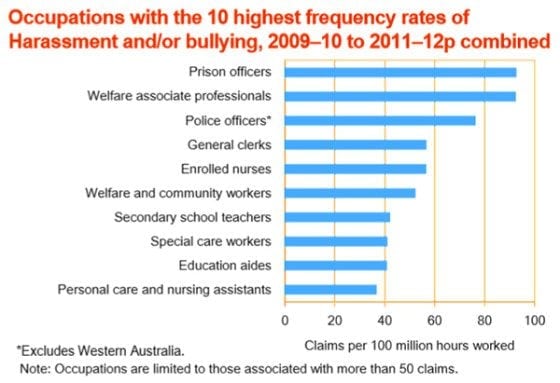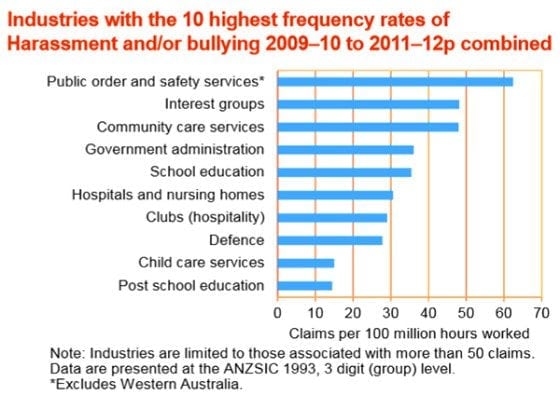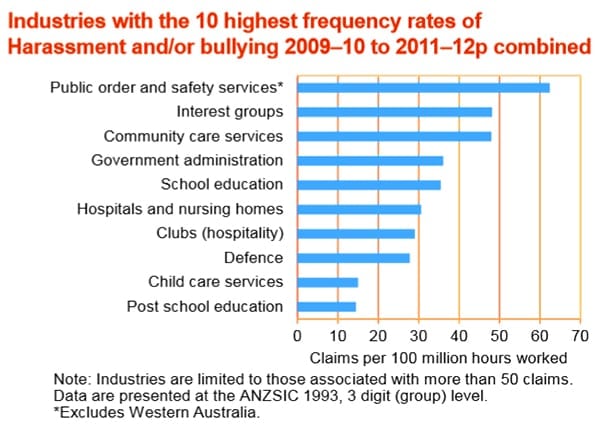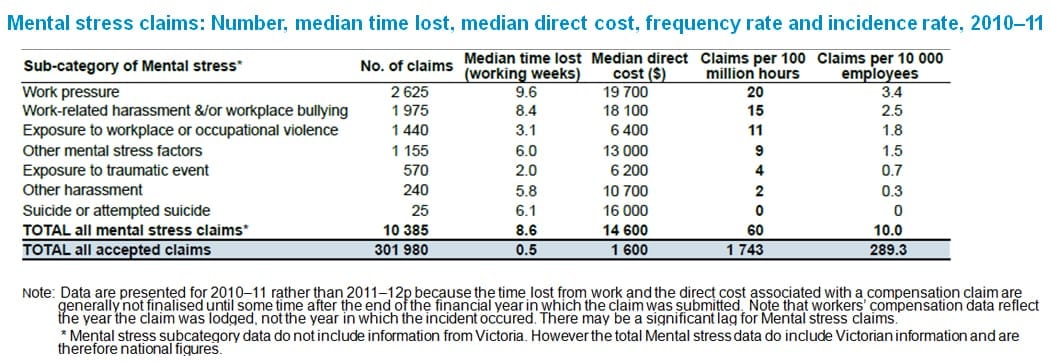 In 2012, the House of Representatives Standing Committee on Education and Employment report, Workplace Bullying, We Just Want It To Stop requested an annual statement of trends in workers’ compensation data relating to psychosocial health and safety generally and specifically, workplace bullying.
In 2012, the House of Representatives Standing Committee on Education and Employment report, Workplace Bullying, We Just Want It To Stop requested an annual statement of trends in workers’ compensation data relating to psychosocial health and safety generally and specifically, workplace bullying.
Safe Work Australia‘s statement, “Psychosocial Health and Safety and Bullying in Australian Workplaces” published on May 30th 2014, is the first statement providing the data of accepted workers’ compensation claims caused by mental stress.
This report defines ‘mental stress’ as employee exposure to one of a range of stressors, e.g. harassment or bullying, traumatic events or unreasonable work pressure, that has caused an injury or disease.
This includes employees who are a victim of:
¢ repetitive assault and/or threatened assault by a work colleague or colleagues, or
¢ repetitive verbal harassment, threats, and abuse from a work colleague or colleagues
Excluded from these claims are victims of sexual or racial harassment which are coded separately, as is assault, where the physical injuries are more serious than the stress caused by the assault.
Mental stress claims by the numbers:

Which industries have the highest incidences of harassment or bullying?
The statement found that occupations with high frequency rates of claims due to harassment and/or bullying tended to involve work with a large degree of contact with the general public.

 Download Safe Work Australia‘s statement, “Psychosocial Health and Safety and Bullying in Australian Workplaces” published on May 30th, 2014.
Download Safe Work Australia‘s statement, “Psychosocial Health and Safety and Bullying in Australian Workplaces” published on May 30th, 2014.
![]()
 Are you in a high risk industry or occupation for mental stress claims?
Are you in a high risk industry or occupation for mental stress claims?
Our sister division Leadership Dimensions has a suite of Dealing With Stress programs. Stress shows up as higher absenteeism, higher Workcover claims, poor performance, bullying behaviour, harassment, and a negative, toxic culture. Whilst most companies have preventative safety programs, they fail to provide managers with an understanding of what happens to a person when affected by a critical incident or cumulative stress at home or at work and what to do about it.
Download our course outlines or find out more here www.ldn.com.au/leadershipdimensions/stress


